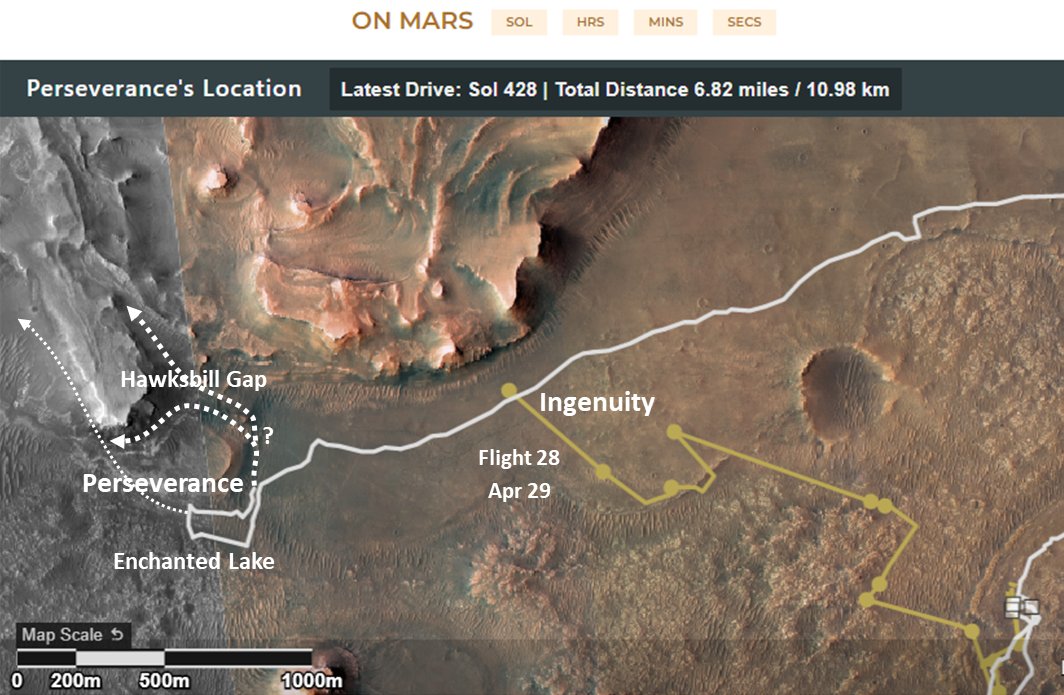Here is a simple approximate method to compute the distance of the Lagrange L2 point from Earth.
An object at L2 is orbiting around the Sun at the same period as earth, i.e., 365.25 days. Let’s assume a circular orbit, centered at the Sun.
An object at L2 is orbiting around the Sun at the same period as earth, i.e., 365.25 days. Let’s assume a circular orbit, centered at the Sun.

At L2, the centrifugal force on the object due its orbital motion must balance out the gravitational forces of earth and the Sun on the object.
i.e., Fsun + Fearth = Fc
Using the notations from the diagram, we have
Fsun = G * Ms * m / (R + r)^2 (Newton’s equation)
i.e., Fsun + Fearth = Fc
Using the notations from the diagram, we have
Fsun = G * Ms * m / (R + r)^2 (Newton’s equation)
Fearth = G * Me * m / r^2
Fc = m * w^2 * (R + r) (w (omega) is the angular speed of object in radians/s)
Hence, we get
G * Ms * m / (R + r)^2 + G * Me * m / r^2 = m * w^2 * (R + r)
Removing m, we get –
G * Ms / (R + r)^2 + G * Me / r^2 = w^2 * (R + r)
Fc = m * w^2 * (R + r) (w (omega) is the angular speed of object in radians/s)
Hence, we get
G * Ms * m / (R + r)^2 + G * Me * m / r^2 = m * w^2 * (R + r)
Removing m, we get –
G * Ms / (R + r)^2 + G * Me / r^2 = w^2 * (R + r)
One can solve for r in the above equation, iteratively using a spreadsheet or a simple computer program.
Plugging in –
G = 6.674E-20 km^3 / kg / s^2
Ms = 1.989E+30 kg
Me = 5.9722E+24 kg
R = 149,597,870 km
w = 2 * pi / (365.25 * 24 * 3600) radians/sec
We can solve for r ...
Plugging in –
G = 6.674E-20 km^3 / kg / s^2
Ms = 1.989E+30 kg
Me = 5.9722E+24 kg
R = 149,597,870 km
w = 2 * pi / (365.25 * 24 * 3600) radians/sec
We can solve for r ...
... and we will get r = 1,505,038 km, which is close to the 1,500,000 km value commonly used in JWST discussions.
Note that JWST does not lie at L2; it orbits around L2 in a halo orbit. See earlier tweet for details.
Note that JWST does not lie at L2; it orbits around L2 in a halo orbit. See earlier tweet for details.
There are more exact methods to compute r, that take into account the moon, the eccentricity of earth's orbit, the center of mass between Sun and earth, ...
You can trying computing the Earth-L1 distance using similar methodology and equations. The answer should be close to 1,487,940 km.
Here is some info about the size and shape of the Sun-Earth L2 halo orbit, that will be used by JWST -
https://twitter.com/akaschs/status/1475194812798279691
• • •
Missing some Tweet in this thread? You can try to
force a refresh















